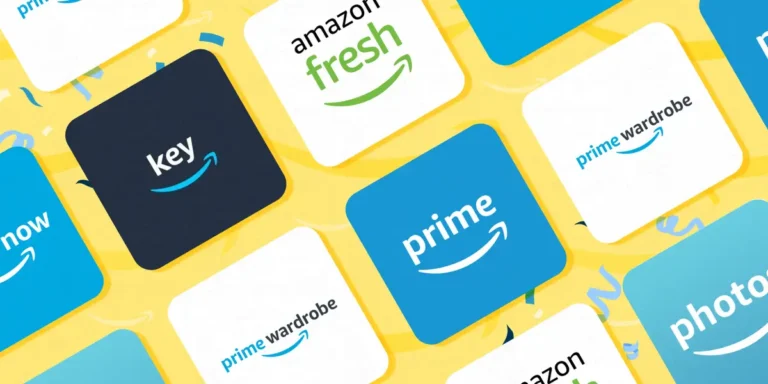3 Key Steps To Cause Related Marketing Success
Are you feeling that twinge of emptiness in your advertising campaigns?
You know, that feeling that something is missing?
No, it’s not another promotional gimmick. It’s a brand purpose.
Many brands will be stuck in the perpetual cycle of a profit-only purpose. However, once they begin to engage in cause related marketing, it signals to the world that they have matured to adulthood.
They gain a purpose beyond profit and help to elevate a brand to something greater than the sum of its products and services.
Well, my friend, let me introduce you to the world of cause-related marketing, where you can boost your brand and make the world a better place at the same time.
Intrigued? Stick around!
Key Takeaways (TLDR)
- Cause-related marketing involves brands partnering with nonprofits or social causes.
- Brands must choose causes that align with their ethos and resonate with their audience.
- Success in cause-related marketing requires reciprocity.
- Brands should craft a compelling narrative around their cause.
- Brands must ensure transparency, authenticity, and a commitment to their chosen cause.
So, What is Cause Related Marketing?
You probably haven’t heard the term “cause-related marketing” often, but it’s been around for a long time. There was a hay day for it back when the success of Toms Shoes, Warby Parker, and Patagonia started making it seem like a viable route.
However, it has since died off as people realized it’s not some marketing gimmick you can try. It’s a real commitment, and when a commitment is linked to a cause, backing out can have huge detrimental consequences.
At its core, cause-related marketing is when a brand collaborates with a nonprofit organization or social cause to promote a product or service, with a portion of the revenue benefiting the cause.
Here are some of the typical ways brands collaborate with causes:
Profit or Revenue Sharing
Contributing a percentage of sales or products to the cause, as with Ethos Water, which donated a portion of its proceeds to safe water programs worldwide. It made such a big impact that Starbucks acquired them in 2005, making them a staple at every Starbucks.
Product Sharing
Tom Shoes and Warby Parker did this with their one-for-one program where they donate one product for every one sold.
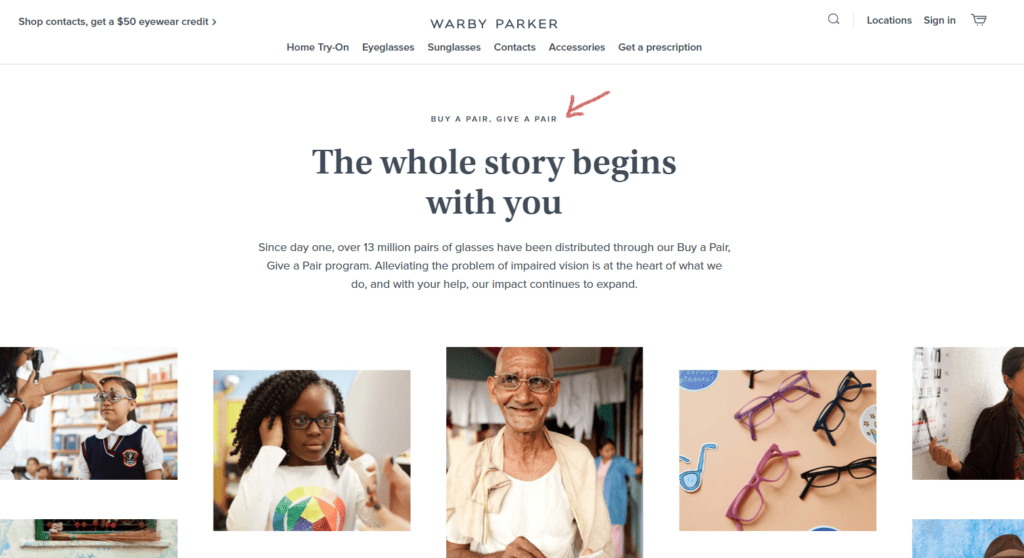
Corporate Responsibility
Advocate causes by making changes to your organization. This can include implementing recycling programs for industrial waste, cutting emissions, ethical sourcing, etc.

Raise Awareness
In addition to the above activities, Ben and Jerry’s takes it one step further by actually making the cause an integrated part of their product with ice-cream flavors named after specific social causes, such as “Save our Swirled” in 2015, which focused on climate change or “Empower mint” which tackled systemic racism.
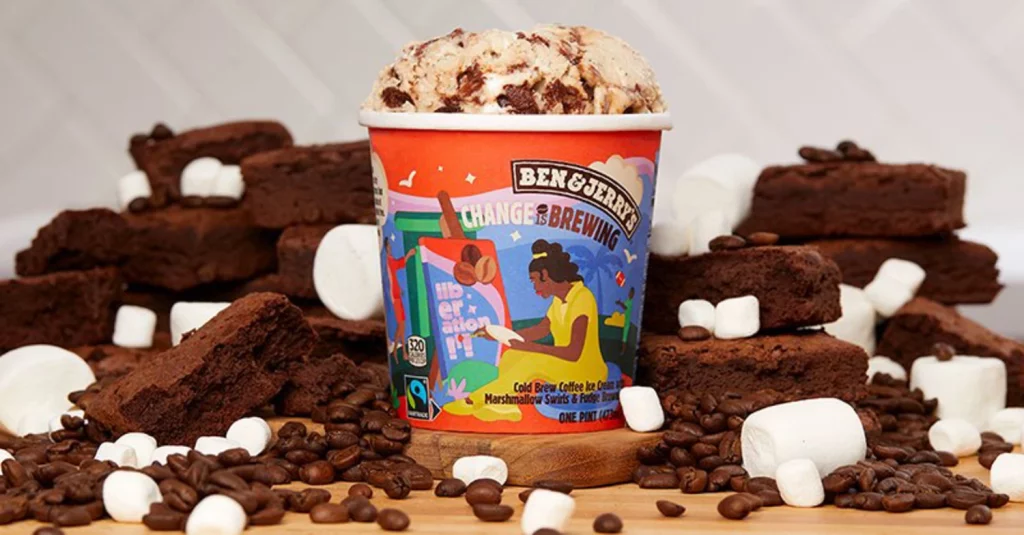
Creating or Leading Programs
This is probably the highest commitment and is often reserved for the likes of Google, Microsoft, and Facebook, who have created programs from scratch to support social causes directly.
For example, Google has committed to developing applications and tools in conjunction with its core tools to help climate initiative scientists at no cost.

Sounds like a win-win, right? It’s not just about slapping a charitable logo onto your product; it’s about forming a meaningful relationship between your brand, the cause, and your customer base.
In 2019, cause sponsorship spending was projected to reach $2.23 billion in the U.S. alone, according to IEG.
Businesses are catching on to this marketing tactic’s efficacy and ethical appeal.
So, now that you know what cause-related marketing is, let’s dive into marketing examples of how you can pull it off successfully.
The Essentials of Cause-Based Marketing: A How-To Guide
Step 1: Choose Your Cause Wisely – The Foundation of Your Campaign
So, do you think you are ready to commit your brand to cause-related marketing? If you are, then Awesome!
But now comes the most crucial part: choosing the right cause for your brand.
Alignment with Brand Values
First, your chosen cause should align with your brand’s ethos and values.
Suppose you’re a health food brand; supporting a non-profit combating childhood obesity might be a natural fit.
Or if you are an electronics manufacturer, you could consider working with e-waste programs or sourcing from vendors with a strong environmental commitment.

This alignment is crucial because it has to make sense.
According to a study by Cone Communications, 89% of U.S. consumers said they would switch brands to one associated with a cause, given similar price and quality.
But remember, the alignment must be authentic, or you risk diluting your brand and losing consumer trust.
Audience Resonance
Understanding your target audience is key to any marketing strategy, and cause-related marketing is no exception.
You’ll want to choose a cause that your target audience cares about. The reason is that you encourage customers to buy your product specifically because of a cause that you endorse. They want the product to signal to others that same sentiment.
Some causes just naturally fit better together than others. Sure, a luxury clothing brand could champion healthier eating, but their clothing doesn’t exactly bring food to mind.
However, if they decided only to use organic fabrics from single sources to help developing countries improve the lives of their community, then wearing that clothing can easily signal that it’s both high quality while also doing some good in the world in a way that is directly related to the product.
Patagonia achieved this with their “Don’t buy this Jacket” campaign when they took a stand against consumerism by encouraging their customers to think twice about buying something new and to consider instead using what they have until it’s no longer usable.
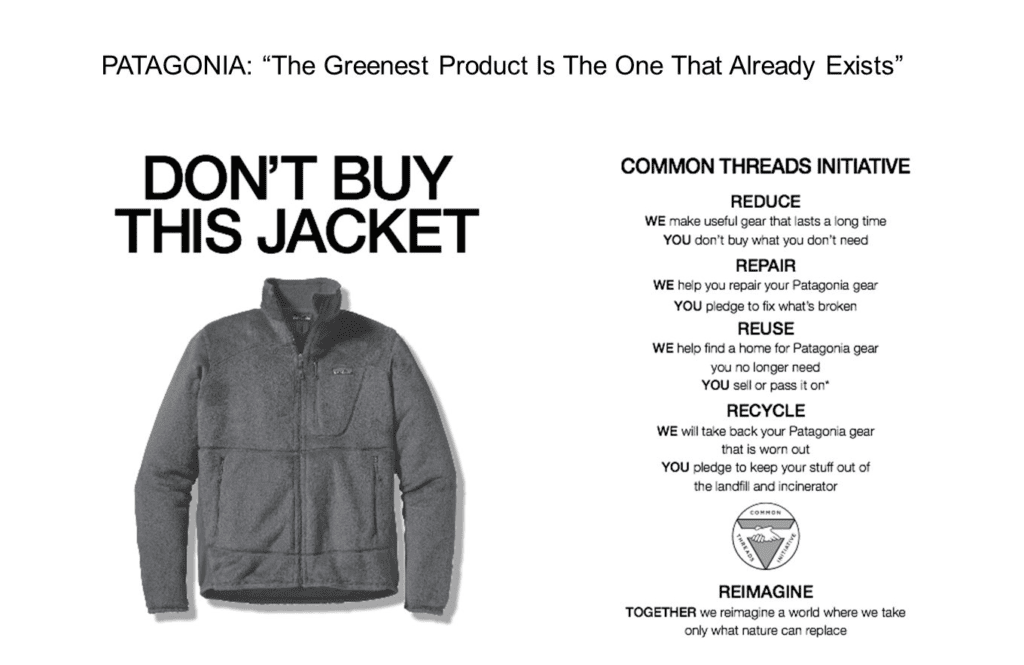
Cleverly, they hinted at the idea that Patagonia products were better built and longer lasting without outright saying it. Instead, the campaign is entirely about the social cause of reducing waste.
To better understand your audience, you can run surveys, dig into market research, or look at social media trends to gauge what matters to your audience.
The closer the cause is to their hearts, the more likely they will engage with your campaign.
Societal Impact
Let’s not forget the whole point is to make a positive impact. Pick a cause that offers tangible benefits and clear solutions to a problem.
The more impactful and immediate the change, your campaign will be.
If you are selling a physical product, it is unlikely that your product isn’t negatively impacting society somehow. A good start is fixing your problems or at least trying to reduce the negative impact your products are already making on the world.
One particular example is the fashion industry, which has been plagued with wage conflicts for decades, is where the term sweatshop was originally coined.
It has become increasingly difficult to hide unethical business practices, so brands like Dedicated, which already practices fair wages and sustainability, often make cause related marketing strategies a part of their core brand values to differentiate themselves from their competitors.
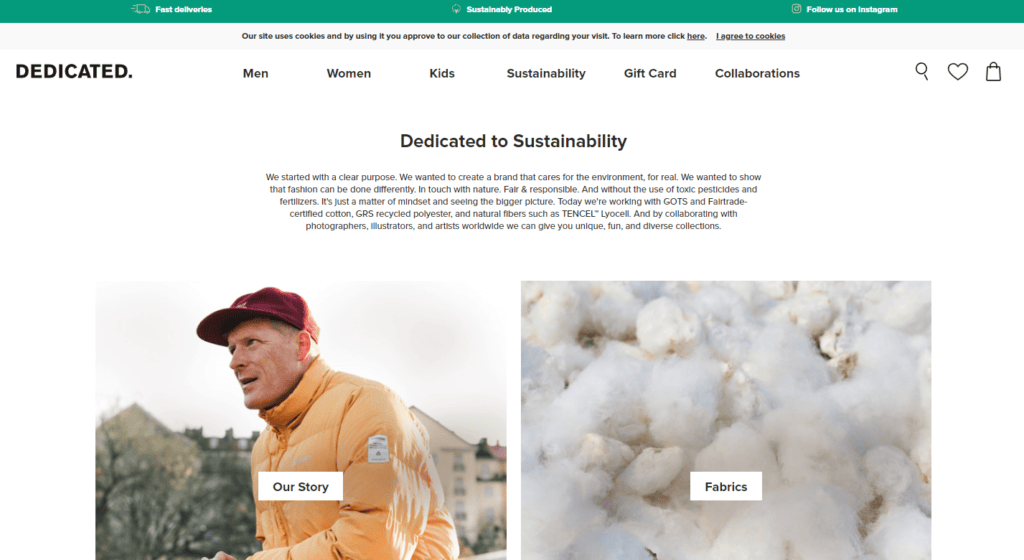
According to a 2017 Cone Communications CSR Study report, 76% of consumers say they won’t buy a company’s products or services if the issues they support contradict their beliefs.
So, make sure your chosen cause isn’t just window dressing but a relevant cause with real societal importance.
Choosing the right cause is the foundation of your cause-related marketing campaign. Get it right, and everything else will follow.
It aligns your brand with something meaningful, engages your audience on a deeper level, and, most importantly, contributes positively to the world.
So, take your time, do your homework, and make a choice that benefits everyone involved.
Step 2: Crafting a Win-Win Partnership
So, you’ve chosen a cause that aligns perfectly with your brand values. Great start! So what’s next?
Before you paint the town (and your marketing collateral) with your newfound charitable zeal, let’s look at the cornerstone of a successful cause-related campaign: the partnership.
How do you craft a relationship that benefits your brand and the cause you support?
The Art of Reciprocity
In a well-orchestrated cause-related marketing partnership, both parties should bring something valuable.
While the non-profit gains exposure and funding from your customer base, your brand can gain social capital by aligning with a meaningful cause.
Ensure that your marketing efforts equally spotlight the cause and its objectives. Whether through shared marketing materials, co-hosted events, or a combination, the point is to create reciprocal value.

This helps ensure that your marketing is focused on the cause rather than the brand. Additionally, don’t try to squeeze in your product, as that would completely diminish the genuineness of your contribution.
According to a 2018 Cone/Porter Novelli study, 66% of consumers believe companies must take a stand on social responsibility and environmental issues, emphasizing the win-win nature of cause-related marketing.
A Shared Voice
One of the most crucial aspects of a successful partnership is a shared message or theme that resonates with your audience.
Your marketing language, visual elements, and even the specific projects you choose to support should speak with one voice.
When the brand and the cause convey the same ethos, it lends more credibility and power to your cause marketing campaign.
Involving Stakeholders
Another pro tip? Involve stakeholders from both sides in the planning process. Getting input from the non-profit community can offer valuable perspectives you might not get otherwise.
This could involve anything from focus groups to community forums, ensuring that the campaign’s benefits are maximized for everyone involved.
Consider opening up comments on pages that discuss your corporate social responsibility to see how people are reacting and soliciting information from them on how you can improve your program.
Measure and Adapt
Once the campaign is live, it is vital to monitor its effectiveness through performance indicators like brand sentiment, audience engagement, and sales.
Collect this data and share it with your non-profit partner so you can adapt your strategies for future campaigns.
This data-driven approach is not just a “nice-to-have”; it’s essential for tweaking your partnership into the well-oiled machine it should be.
In summary, a win-win partnership in cause-related marketing involves reciprocity, shared messaging, stakeholder involvement, and continual adaptation.
REI has not only made great efforts towards social change and sustainability through programs such as recycling and refurbishing used equipment, but they’ve even taken further steps to encourage their vendor brands to adapt by voluntarily removing products with non-sustainable or harmful substances and materials.
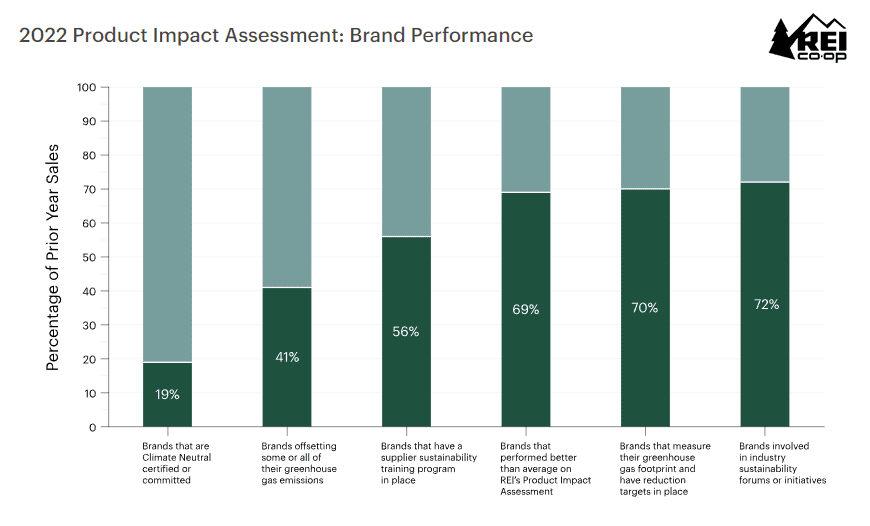
By working with vendor brands to make their products more sustainable, they have helped to lift those brands’ overall performance in retail. This has helped them earn the “Best American Brand for Social Impact in 2023” ranking by Forbes.
Nail these elements, and you won’t just be another brand jumping on the cause marketing strategy bandwagon—you’ll be setting the pace.
Step 3: The Art of Telling a Compelling Story
Let’s zero in on the third step of successful cause-based marketing—storytelling. Yes, you read that right. No matter how much you invest in advertising or product design, nothing resonates with people more than a compelling story.
It humanizes your brand, adds emotional weight to your campaign, and provides a narrative arc that engages your audience. But how do you craft such a story? Allow me to guide you through.
The Hero’s Journey
In any compelling narrative, there’s a hero; in this case, it’s the cause you’re supporting.
Frame your cause as the hero going through a journey, facing challenges, and triumphing against adversity.
In the case of Toms shoes, Tom was the brand’s image, so he had to take the hero role. He, true to his commitment to the cause, would go to many of these developing countries in need and deliver shoes himself.

Just seeing photos of his acts of kindness and his real commitment to the case spoke a million words, all in a few images.
Your brand acts as the guide or mentor, providing the tools (or, in this case, funds and awareness) to help the hero succeed. This narrative structure is as old as time but remains effective.
Create Relatable Characters
The story you’re telling needs faces—real people affected by the cause you’re championing.
Human stories create emotional customer engagement, the backbone of successful cause-related marketing campaigns.
According to a Cone Communications study, 87% of consumers would be more likely to trust a company supporting social or environmental issues.
So, put the beneficiaries of your cause at the forefront, let them speak, and let your audience see the real-world impact of their support.
Use Visual Storytelling
In the era of scrolling and skimming, visuals can grab attention more effectively than a text block.
Use impactful images, compelling videos, or infographics to make your story more engaging.
Brands that use video marketing enjoy 66% more qualified leads per year, according to OptinMonster.
Ensure the visuals align with your narrative and brand identity for a coherent storytelling experience.
Why Storytelling is Crucial
Storytelling in cause-related advertising isn’t just an add-on; it’s necessary. It gives depth to your campaign, makes abstract concepts relatable, and, most importantly, drives action.
Storytelling transforms your marketing initiative from a mere transaction to an emotional experience. And let’s be real—who doesn’t want their brand associated with positive, impactful change?
So there you have it, the nuts and bolts of how to master storytelling in your cause-related marketing campaign.
Not just a pretty add-on, storytelling is the engine that propels your campaign from good to extraordinary. What are you waiting for? It’s time to pen down that epic tale of change.
Some Very Important Things To Consider When Embarking In Cause Related Marketing
Transparency & Authenticity
Be upfront about how much of the proceeds will go to the cause. Genuine connections between the brand and the cause are more likely to engage consumers. They will quickly see through lies or even unearth things you weren’t even aware of.
Longevity
This isn’t a one-off; think of cause-related marketing as a long-term relationship, not a quick fling. If your commitment wanes or you back out of it, you signal to the public that it was, in fact, a profit-motivated money grab.
Take, for example, the case of Bud Light when they created a cause-marketing campaign in 2023 by sponsoring well-known LGBTQ influencer Dylan Mulvaney to bring awareness to LGBTQ equality.
However, their core consumer base of mostly conservative Americans was staunchly opposed to it, and due to the outpouring of disapproval, Bud Light quickly backed out, claiming they had made a mistake.

However, this simultaneously alienated their core consumer base and the untapped progressive target audience they were trying to win over.
Investigate Your Brand
When you take up a cause to champion, the public may initially believe it is ingenuine and profit-motivated. However, if you are committed to the cause, you will naturally overcome this dilemma.
However, by taking a stand for a cause, you open your brand and business to a new level of scrutiny. People will look for contradictions in your altruism throughout everything you do. So, you need to be vigilant about ensuring there are no holes that could sink your ship.
Investigate Your Partners
Things can always start great but go downhill quickly when a scandal hits your cause partners, even when its premise is naturally good. Do your due diligence and be involved in the cause’s activities.
I had to deal with this when we partnered with a charity that, for the most part, seemed all positive in the beginning. Once the campaign started rolling out, it turned out that one of the influencers commissioned by our partner had a hidden history of posting antisemitic comments.
The blowback affected the nonprofit organization and trickled down to us, with people demanding that we immediately break ties with the organization.
Taking Your Cause-Related Marketing to the Next Level
Want to go beyond the basics? Consider an integrated, multi-channel campaign, using your social media accounts, blogs, and even influencer partnerships to amplify your message. And don’t be afraid to get creative! The more unique your campaign, the more it will stand out in the cluttered marketing landscape.
Wrapping Up
Cause-related marketing isn’t just a trend; it’s a powerful tool for building brand loyalty, equity, and social impact. So, if you want to give your marketing efforts a sense of purpose and meaning, this could be the golden ticket you’ve been searching for. Now, get out there and make a difference while making those sales!
Frequently Asked Questions
What is cause-related marketing with examples?
Cause-related marketing is a strategy where a business partners with a non-profit organization or social cause, pledging a portion of the revenue from a specific product or service to benefit that cause through corporate giving. For example, TOMS Shoes has a “One for One” campaign, where for every pair of shoes purchased, another pair is donated to a child in need.
What is cause-related marketing in business?
In business, cause-related marketing is a dual-purpose strategy aiming to boost brand awareness and sales while contributing to a social or environmental cause. This approach enhances a brand’s public and corporate image. It often resonates with consumers who prefer to support companies with ethical commitments.
What is an example of a cause marketing brand?
One iconic example of a brand excelling in cause marketing is Dove’s “Real Beauty” campaign. Partnering with organizations that promote body positivity and self-esteem, Dove has effectively intertwined its brand image with the many benefits of cause marketing. It is not just about selling personal care products but also about raising awareness and promoting self-worth.
What are the types of cause-related marketing?
Cause-related marketing can manifest in various forms, such as percentage-of-sales donations, buy-one-give-one programs, and charity events sponsored by the brand. Other such campaign types include licensing campaigns, where a brand can use the logo of a non-profit in its marketing in exchange for a fee or donation, and employee engagement campaigns, where employees volunteer for a cause while representing the brand.




